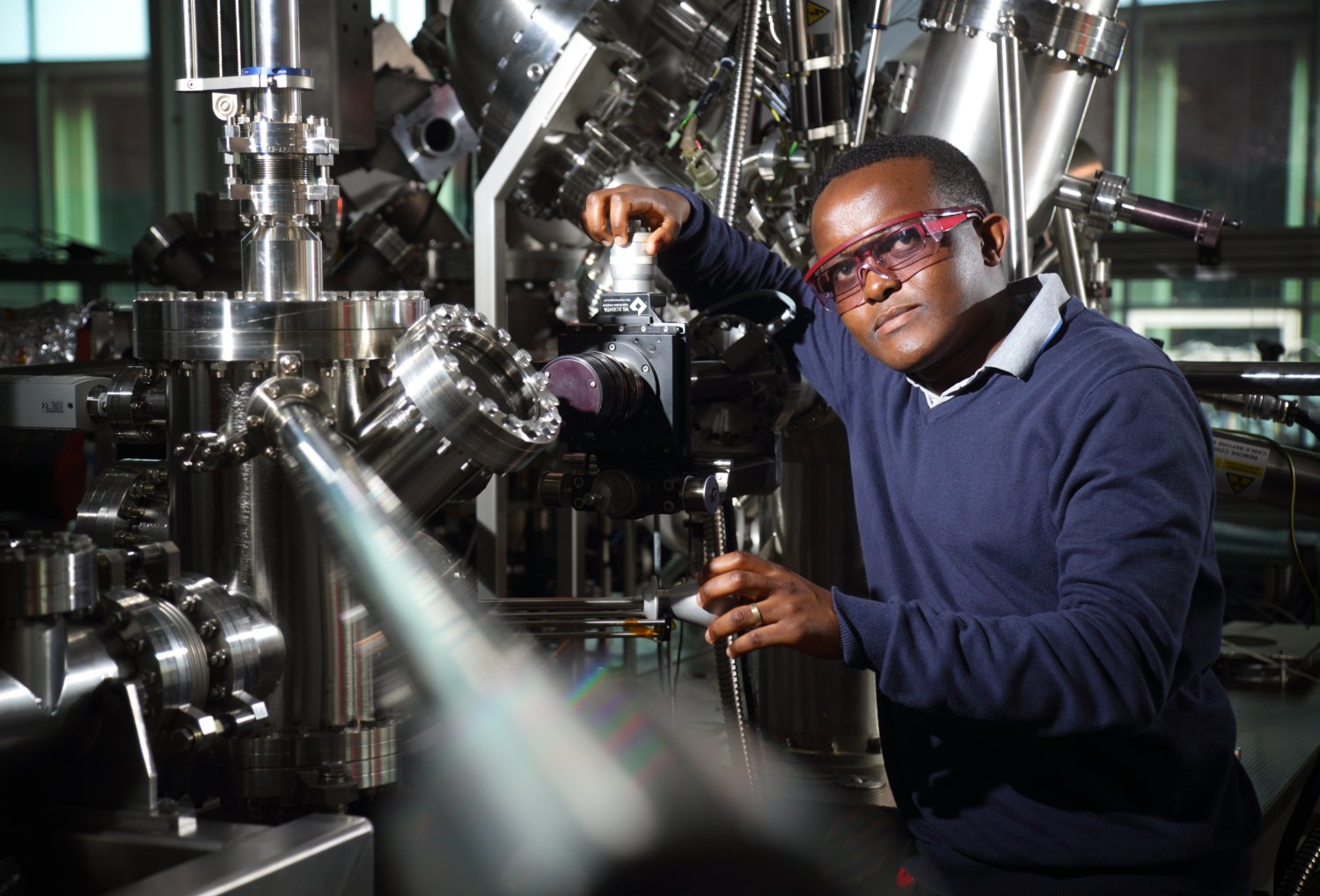| Event Name | Dr Prosper Ngabonziza |
|
| Start Date | 15th Dec 2017 | |
| End Date | 20th Dec 2017 | |
| Description | 
Within the framework of the LAAMP Colloquium programme, Dr Prosper Ngabonziza (Max-Planck-Institute for Solid State Research, Department of Solid State Quantum Electronics, Stuttgart, Germany) has delivered a presentation entitled "Synchrotron Light Sources and Their Diverse Applications" at the following venues in Kigali, Rwanda:
In addition to interacting with many students who were excited about the possibility of training at AdLSs under the LAAMP initiative, Ngabonziza held discussions with a number of top university and governmental officials, including UR’s Deputy Vice-Chancellor for Academic Affairs and Research, the Principal of its CST, and the Director-General for Science, Technology and Research in the Rwandan Ministry of Education. Rwanda has been making tremendous strides in science and technology in recent years and it will be important for LAAMP to follow up on the doors that Ngabonziza was able to open. Ngabonziza, together with the Director of ICTP-EAIFR, also arranged a meeting at the Ministry of Education to once more introduce the LAAMP project to them. They were interested in encouraging scientists from Rwanda to participate in the LAAMP FAST program and agreed to prepare a short document that will be presented to the Minister of Education. AbstractSynchrotron Light Sources and Their Diverse Applications A synchrotron light source is one of the most brilliant man-made light sources in the world. It can be more than a million times brighter than the Sun. ‘Synchrotron light’ refers to the range of the electromagnetic spectrum that is produced by a dedicated synchrotron machine. It is produced when electrons, moving at velocities close to the speed of light, are forced to change direction under the action of a magnetic field [1]. In the first part of this presentation I will introduce the basic concepts of synchrotron light; and then exemplify how synchrotron light source has greatly revolutionized basic and applied research in many disciplines like nanotechnology, physics, biology, medical applications, archaeology, chemistry, environmental science and geology. Synchrotron radiation has also provided, in many cases, the key to solving problems arising from technological challenges in industrial research or development [2]. In the second half of the talk, I will focus on the applications of synchrotron light in condensed matter physics and materials science for probing the electronic band structure of correlated electrons materials and topological insulator quantum materials. One of the prominent synchrotron techniques is spectroscopy, in particular, the X-ray photoemission spectroscopy (XPS) and angle resolved photoemission spectroscopy (ARPES). These techniques allow detailed study of the band structure and determination of elemental composition, chemical state and physical properties of different materials. I will show one of our electronic structure measurements on strontium ruthenate materials performed at Soleil synchrotron facility using ARPES. In particular, I will discuss the near Fermi level band dispersion and the Fermi surface topology of Sr4Ru3O10 single crystals [3]. Next, I will discuss our XPS and ARPES data on intrinsic Bi2Te3 topological insulator thin films [4]. I will demonstrate how in-situ characterization of topological insulator nanomaterials using several, complementary surface analysis techniques enable to investigate topological surface states without exposing the samples to ambient conditions; and by using vacuum suitcase technology allows samples transfer in ultra-high vacuum conditions for further in-situ analysis at different locations like synchrotron radiation facilities [5]. I will end with a brief discussion on the opportunities that an African light source can bring to the continent by, for example, contributing not only to the return of African science diaspora, but also attracting international scientists to come to Africa for their synchrotron based researches. An African light source will also contribute to the improvement of University education in Africa, offer career opportunities to graduate students; and foster cross-border research collaborations in key areas of science and technology. References 1. P. Willmott, Introduction to synchrotron radiation: techniques and applications; John Wiley and Sons, West Sussex, UK (2011). |
|
| Location | Kigali Rwanda |
|
| Contact | Sekazi Mtingwa [email protected] |
|
| URL | http://laamp.iucr.org | |
